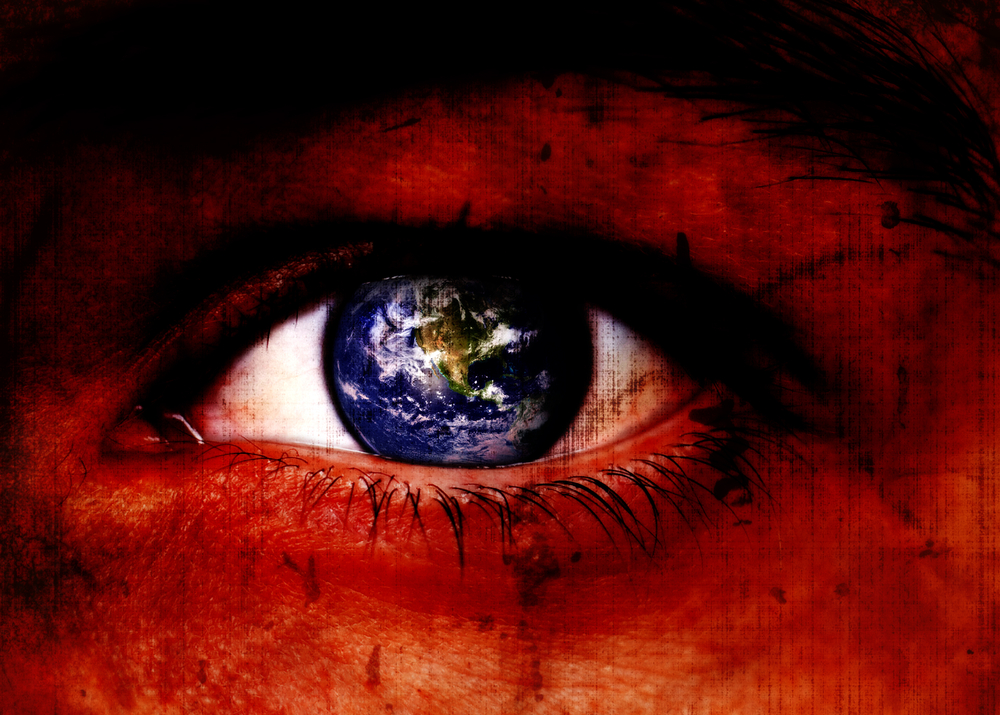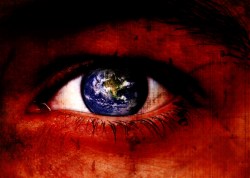There was recently another one of those (numbingly familiar) internet tizzies wherein someone trolls environmentalists for being “alarmist” and environmentalists get mad and the troll says “why are you being so defensive?” and everybody clicks, clicks, clicks.
I have no desire to dance that dismal do-si-do again. But it is worth noting that I find the notion of “alarmism” in regard to climate change almost surreal. I barely know what to make of it. So in the name of getting our bearings, let’s review a few things we know.
We know we’ve raised global average temperatures around 0.8 degrees C so far. We know that 2 degrees C is where most scientists predict catastrophic and irreversible impacts. And we know that we are currently on a trajectory that will push temperatures up 4 degrees or more by the end of the century.
What would 4 degrees look like? A recent World Bank review of the science reminds us. First, it’ll get hot:
Projections for a 4°C world show a dramatic increase in the intensity and frequency of high-temperature extremes. Recent extreme heat waves such as in Russia in 2010 are likely to become the new normal summer in a 4°C world. Tropical South America, central Africa, and all tropical islands in the Pacific are likely to regularly experience heat waves of unprecedented magnitude and duration. In this new high-temperature climate regime, the coolest months are likely to be substantially warmer than the warmest months at the end of the 20th century. In regions such as the Mediterranean, North Africa, the Middle East, and the Tibetan plateau, almost all summer months are likely to be warmer than the most extreme heat waves presently experienced. For example, the warmest July in the Mediterranean region could be 9°C warmer than today’s warmest July.
Extreme heat waves in recent years have had severe impacts, causing heat-related deaths, forest fires, and harvest losses. The impacts of the extreme heat waves projected for a 4°C world have not been evaluated, but they could be expected to vastly exceed the consequences experienced to date and potentially exceed the adaptive capacities of many societies and natural systems. [my emphasis]
Warming to 4 degrees would also lead to “an increase of about 150 percent in acidity of the ocean,” leading to levels of acidity “unparalleled in Earth’s history.” That’s bad news for, say, coral reefs:
The combination of thermally induced bleaching events, ocean acidification, and sea-level rise threatens large fractions of coral reefs even at 1.5°C global warming. The regional extinction of entire coral reef ecosystems, which could occur well before 4°C is reached, would have profound consequences for their dependent species and for the people who depend on them for food, income, tourism, and shoreline protection.
It will also “likely lead to a sea-level rise of 0.5 to 1 meter, and possibly more, by 2100, with several meters more to be realized in the coming centuries.” That rise won’t be spread evenly, even within regions and countries — regions close to the equator will see even higher seas.
There are also indications that it would “significantly exacerbate existing water scarcity in many regions, particularly northern and eastern Africa, the Middle East, and South Asia, while additional countries in Africa would be newly confronted with water scarcity on a national scale due to population growth.”
Also, more extreme weather events:
Ecosystems will be affected by more frequent extreme weather events, such as forest loss due to droughts and wildfire exacerbated by land use and agricultural expansion. In Amazonia, forest fires could as much as double by 2050 with warming of approximately 1.5°C to 2°C above preindustrial levels. Changes would be expected to be even more severe in a 4°C world.
Also loss of biodiversity and ecosystem services:
In a 4°C world, climate change seems likely to become the dominant driver of ecosystem shifts, surpassing habitat destruction as the greatest threat to biodiversity. Recent research suggests that large-scale loss of biodiversity is likely to occur in a 4°C world, with climate change and high CO2 concentration driving a transition of the Earth’s ecosystems into a state unknown in human experience. Ecosystem damage would be expected to dramatically reduce the provision of ecosystem services on which society depends (for example, fisheries and protection of coastline afforded by coral reefs and mangroves.)
New research also indicates a “rapidly rising risk of crop yield reductions as the world warms.” So food will be tough.
All this will add up to “large-scale displacement of populations and have adverse consequences for human security and economic and trade systems.” Given the uncertainties and long-tail risks involved, “there is no certainty that adaptation to a 4°C world is possible.” There’s a small but non-trivial chance of advanced civilization breaking down entirely.
Now ponder the fact that some scenarios show us going up to 6 degrees by the end of the century, a level of devastation we have not studied and barely know how to conceive. Ponder the fact that somewhere along the line, though we don’t know exactly where, enough self-reinforcing feedback loops will be running to make climate change unstoppable and irreversible for centuries to come. That would mean handing our grandchildren and their grandchildren not only a burned, chaotic, denuded world, but a world that is inexorably more inhospitable with every passing decade.
Take all that in, sit with it for a while, and then tell me what it could mean to be an “alarmist” in this context. What level of alarm is adequate?




